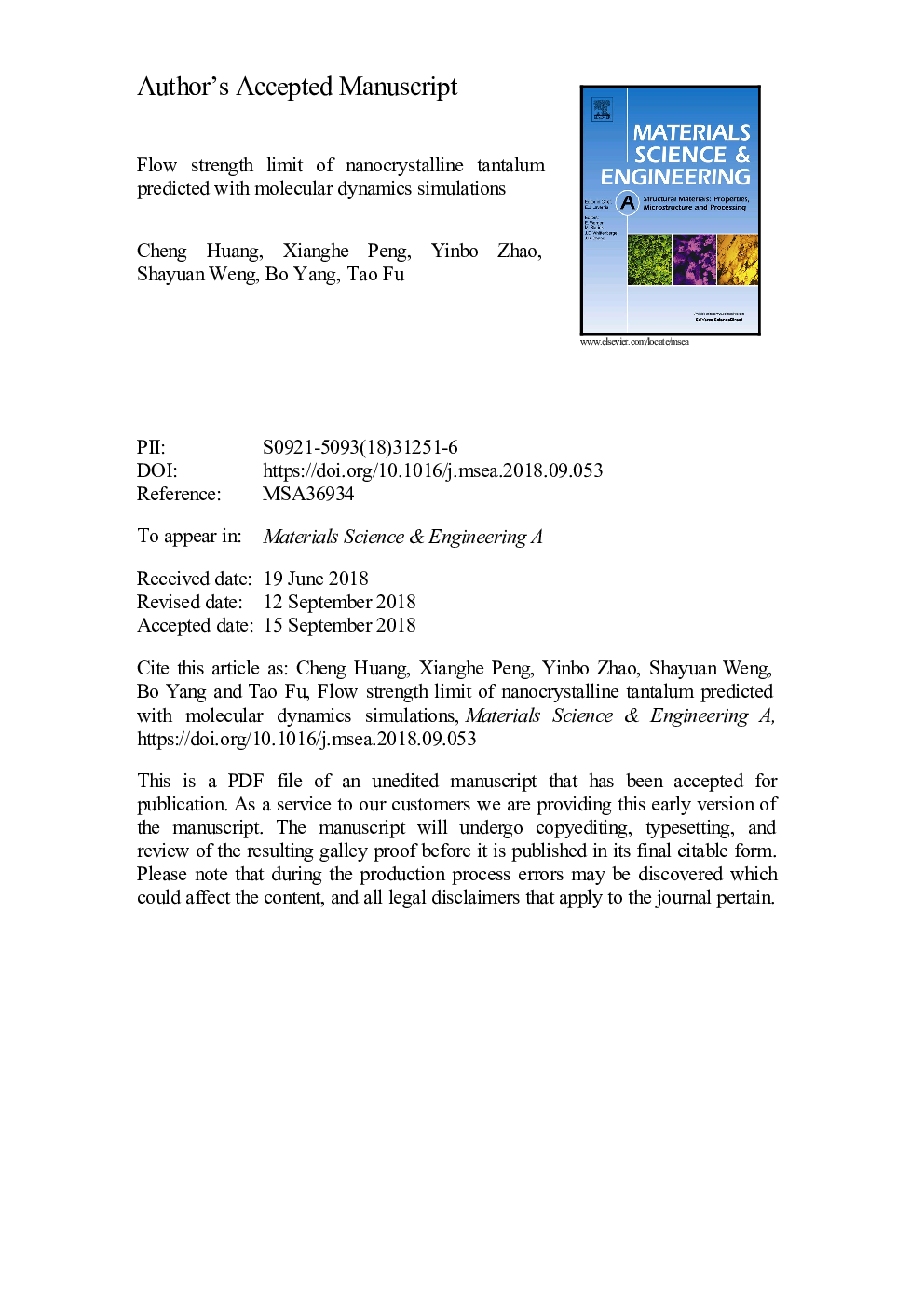| Article ID | Journal | Published Year | Pages | File Type |
|---|---|---|---|---|
| 10646569 | Materials Science and Engineering: A | 2018 | 23 Pages |
Abstract
The effects of grain size (d) on the flow strength (Ïflow) as well as the deformation mechanism of nanocrystalline tantalum (NC-Ta) under uniaxial tension were investigated with molecular dynamics (MD) simulations. It showed that there exists a critical grain size of dcr =â¯7â¯nm, at which Ïflow reaches the maximum. Generalized stacking fault energy curves suggest that <111>{110} and <111>{112} are the easiest slip systems for dislocations and twins to occur, and after that the other slip systems might be activated. The twinning mechanism of Ta crystal is analyzed to understand the plastic deformation. For the sample with d >â¯7â¯nm, the variation of Ïflow against d follows the Hall-Petch relationship, attributed to the strengthening due to the accumulations of dislocations and twins with the decrease of d. For the sample with d <â¯7â¯nm, the variation of Ïflow against d exhibits an inverse Hall-Petch relationship, attributed to the softening induced by grain boundary activities. Additionally, cracks can be found in the samples with larger d, but they do not significantly propagate and affect the flow stress. Our simulation results could be beneficial to the design and optimization of such kind of high-performance nano-structured materials.
Related Topics
Physical Sciences and Engineering
Materials Science
Materials Science (General)
Authors
Cheng Huang, Xianghe Peng, Yinbo Zhao, Shayuan Weng, Bo Yang, Tao Fu,
